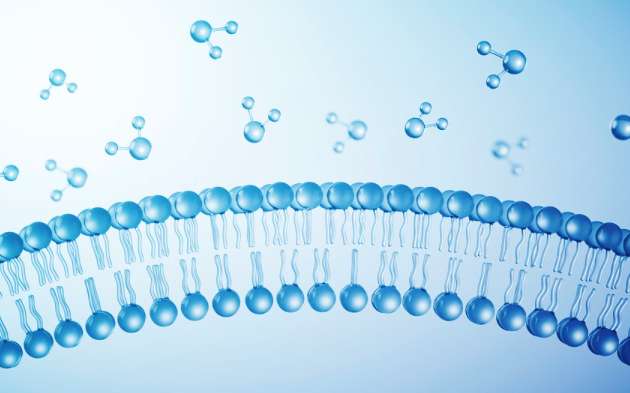Oligonucleotide (Oligo) drugs have seen a growing trend in recent years, and their metabolic pathways are different from conventional small molecules. The main metabolic enzymes for Oligo drugs are exonucleases and endonucleases, which widely exist in blood and various organs and tissues. There was little difference in nuclease metabolism across species, which led to similar metabolite profiles across the species. The conventional metabolic systems used for small molecule research are not suitable for studying the metabolism of Oligo drugs. Therefore, it is important to select appropriate in vitro metabolism study systems for screening Oligo drugs, particularly in the early stages of development.
Pros and cons of 8 in vitro systems for Oligo metabolism study
The liver is the major organ where most small molecules are metabolized, so hepatocytes, liver microsomes, and the liver S9 system are commonly used for the metabolic study of small molecules. The enzymes involved in the metabolism of small molecule compounds are mainly phase I and phase II metabolizing enzymes. However, Oligo drugs are usually metabolized by nucleases, which are widely distributed in various tissues and organs, so the conventional strategies are not suitable for Oligo drugs. 8 research systems commonly used for the in vitro metabolism of Oligo drugs are shown in Table 1. In the early screening stage, it is difficult to screen compounds or optimize structures in large quantities through in vivo experiments. An appropriate in vitro metabolic system can predict in vivo metabolic, assist in optimizing lead compounds, and save time and cost for researchers.
Matrix | Advantages | Disadvantages | Applications |
Nuclease | Pure enzyme system, less interfering factors | The role of single enzymes is quite different from in vivo | Early evaluation of the impact of new chemical modifications on stability |
Serum/plasma | Evaluate stability in the blood circulation system | Plasma anticoagulated by metal chelators is not suitable for Oligo metabolism studies | Generally required for in vitro Oligo compounds |
Liver S9 | Contains most enzymes in the liver and is easily obtained | Lower enzyme concentration, and greater differences in liver composition | An alternative of the liver homogenate to some extent |
Liver homogenate | The whole liver tissue is homogenized, and the enzyme system is relatively comprehensive | Difficult to obtain the human liver homogenate | Recommended for in vitro screening evaluation of Oligo drugs |
Liver microsomes | Abundant CYP enzymes | CYP-mediated metabolism does not occur with approved ASOs and siRNAs | Not suitable |
Hepatocytes | The enzyme system is relatively complete | Difficult to across membranous barriers for poorly permeable Oligo drugs | Metabolism evaluation for liver targeting Oligo drugs |
Lysosome | A representative model of lysosomal enzymes and the first and dominant environment after Oligos enter cells via endocytosis | Specific subcellular structures with limitations | Important for Oligo stability evaluation |
Target tissue-related matrices | In vitro study system directly related to drug efficacy | Difficult to obtain the human matrix | Prediction of metabolism in target tissues |
Table 1. In vitro metabolism study system for Oligo drugs
#1 Nuclease
Nucleases can be classified into endonucleases and exonucleases. Exonucleases act on the end of the strand, leading to the release of mononucleotides, while endonucleases cleave internally, resulting in strands of different lengths. In vitro metabolism studies of pegaptanib using mixed enzyme solutions containing endonucleases, 3' and 5' exonucleases, and ribonucleases showed that the remaining percentage of unchanged was 6.1-17.6% after 5 h of nuclease incubation. Nuclease metabolic stability is only mentioned for Viltolarsen among other marketed Oligo drugs, but no detailed data can be found in publications. According to the literature, the metabolic capacity of nucleases is limited. For example, Kim et al. found that ASO compounds incubated with purified endonuclease (RNase A) and exonuclease (Exo-T) for 2 days did not undergo degradation but did produce degradation in both liver homogenate and in vivo [2]. Robin et al. used 3 'exonuclease (Nuclease P1) to study the in vitro metabolism of Oligos and found that single-stranded Oligos were quickly metabolized but double-stranded Oligos were stable [1].
#2 Serum/plasma
Of the six approved siRNA drugs, five were using serum for metabolic stability studies and exhibited different results. For approved ASO drugs, only plasma stability data are presented in the application materials of Pegaptanib. After incubation in plasma for 5 h, 12.9% ~ 100% of Pegaptanib remained in human, rabbit, dog, and monkey plasma. Stability data in plasma or serum are not found in other marketed ASO drug application materials. Serum stability was also studied with the marketed aptamer drug Avacincaptad Pegol, a potential metabolite was found which accounted for 9, 12, and 14% of the unchanged drug in monkey serum, and accounted for 0, 6, and 6% of the unchanged drug in rat and human serum after 24, 48, and 72 hours of incubation. The reason that serum is chosen over plasma may be the additional anticoagulant treatment for the preparation of plasma. EDTA, one of the commonly used anticoagulants, is an inhibitor of nuclease, so the plasma anticoagulated with EDTA is not suitable for the in vitro stability study of Oligo drugs.
Oligos | 24 h incubation in Serum (remaining%) |
Patisiran | Nude siRNA: < 1% (M/R/C/H) LNP-siRNA: 62-71% (M/R), 42-44% (C), ~ 100% (H) |
Givosiran | AS strand: 75% (M), 59% (R), 63% (C), 89% (H) SS strand: 95% (M), 95% (R), 100% (C), 95% (H) |
Lumasiran | siRNA: > 90% (M/R/C/H) |
Inclisiran | AS strand: 85% (M), 82% (R), 72% (C), 80% (H) SS strand: 95% (M), 91% (R), 91% (C), 87% (H) |
Vutrisiran | AS strand: 95-99% (M/R/C/H) SS strand: 98-101% (M/R/C/H) |
Nedosiran | None |
Table 2. Stability of approved siRNA drugs in serum
M: mouse; R: rat; C: monkey; H: human
#3 Liver S9
Of the six siRNA drugs that have been marketed, five have conducted liver S9 metabolic stability assay and the results showed different levels of metabolism. There is no obvious metabolism pattern from the metabolic trend. In our experience, the GalNAc moieties of the SS strand are quickly cleaved in the liver, with the SS strand losing GalNAc as the main metabolite. However, the SS strand is relatively more stable in the in vitro S9 system than in the in vivo liver, which causes differences between in vitro and in vivo. For approved six ASO drugs, metabolism studies in liver S9 were not presented in their application materials. Avacincaptad Pegol, an aptamer drug, was also studied for stability in liver S9, with 48%, 0%, and 0% remaining in human, monkey, and rat liver S9 after 24 hours of incubation, respectively.
Oligos | 24 h incubation in liver S9 (remaining%) |
Patisiran | Nude siRNA: < 1% (M/R/C/H) LNP-siRNA: 42-77% (M/R/C/H) |
Givosiran | AS strand n: 103% (M)/68% (C)/49% (H)/36% (R) SS strand: 102% (M)/88% (C)/65% (H)/64% (R) |
Lumasiran | AS strand: essentially stable (M/R/C/H) SS strand: 80-85% (M/R/C/H) |
Inclisiran | AS strand: ≥ 41% (M/R/C/H) SS strand: ≥ 64% (M/R/C/H) |
Vutrisiran | AS strand: 83% (M)/86% (R)/70% (C)/90% (H) SS strand: 72% (M)/89% (R)/59% (C)/89% (H) |
Nedosiran | None |
Table 3. Stability of approved Oligo drugs in liver S9
M: mouse; C: monkey; H: human; R: rat
#4 Liver homogenate
The liver homogenate is a recommended system for in vitro metabolism studies. Rosanne et al. performed in vitro metabolic studies of ASO in mouse liver homogenates and found a good correlation with in vivo metabolism [3]. Babak et al. studied the in vitro metabolism of GalNAc-conjugated siRNA in rat liver homogenates and compared it with phosphodiesterase, endonuclease/exonuclease, plasma and serum, hepatocytes, and liver lysosomes, and found that the metabolic system of liver homogenates was optimal and presented a good correlation between the metabolic results of liver homogenate systems and in vivo metabolism [4]. Babak et al. also suggested using an in vitro liver homogenate stability assay to screen Oligo drugs during lead optimization progress.
#5 Liver microsomes
Although it is generally accepted that common microsomal enzymes such as CYPs and FMO are not involved in the metabolism of Oligo drugs, it has also been reported that Oligo drugs can also be metabolized in human liver microsomes. Kim et al. found that an unmodified ASO compound was completely metabolized after incubation with human liver microsomes for 12 h, and the major metabolites were 3' terminal degradation products, indicating that there exists 3' exonuclease in human liver microsomes. However, the same ASO compound was completely metabolized after incubation with nuclease or liver homogenate for 1 h, indicating that the nuclease activity of liver microsomes was low[5]. Although the liver microsomal system may metabolize Oligo drugs, it is not related to the contribution of CYP enzymes. So far, there is no report on the involvement of CYP enzymes in Oligo metabolism.
#6 Hepatocytes
As the application materials of Lumasiran mentioned the deaminated metabolite of Lumasiran which was found in monkey liver samples was not found in liver S9 of various species. So human hepatocytes HepatoPac® were further used to study the deaminated metabolite of Lumasiran in in vitro metabolism. The results showed that the deaminated metabolite was detected at a higher concentration than unchanged Lumasiran after 168 hours of incubation, followed by 3'N-1 (AS), indicating that deaminated metabolite can be produced in human hepatocytes. In the application materials of Nedosiran, metabolic studies were performed using mixed human hepatocytes, but no metabolites were found after 24 hours of incubation, the supposed reason is the short incubation time. Robin et al. used rat, monkey, and human hepatocytes to study the in vitro metabolism of GalNAc-modified siRNAs and found that GalNAc hydrolysis and linker hydrolysis products, as well as 3'N-1 (AS) metabolites were all detected. In terms of metabolic rates, GalNAc and linker were faster hydrolyzed in rat hepatocytes than in monkeys and humans. Robin et al. also compared the results of liver metabolism of four different siRNAs in hepatocytes in vitro and in vivo and found that the major metabolites could be found in both in vitro and in vivo [1]. OSWG recommends hepatocytes as an in vitro study system [6], because they provide the closest approximation of uptake into specific compartments of hepatocytes in vivo, whereas liver S9 or tissue homogenates can result in exposure to nonrelevant compartments and, thus, overexposure to nucleases relative to in vivo systems. There are not many cases of using hepatocytes as an in vitro study system, possibly because the membrane barriers make it difficult for poorly permeable Oligo drugs to enter cells.
#7 Lysosome
Lysosomes are the immediate environment when Oligo drugs enter cells by endocytosis. Acidic lysosomes (pH = ~ 5) containing abundant enzyme systems, including nucleases and various hydrolases, are an important metabolism site for Oligo drugs, so lysosomes are an efficient experimental system to study the metabolic stability of Oligo drugs. As reference suggested, GalNAc-modified siRNA, after 4 hours of incubation with mouse liver lysosomes at pH 7 and pH 5, the remaining were 95% and 32%, respectively, which suggested that acidic conditions are more conducive to the hydrolysis of GalNAc [1]. The application document of Nedosiran also showed that four GalNAc fragments were metabolized in lysosomes as well as four amylamine linker groups.
#8 Target tissue-related matrices
The liver is the main distribution and metabolism organ of Oligo drugs as well as a common target tissue. So, liver-related matrices are often used to study the in vitro metabolism of Oligo drugs. In addition to that, some local delivery Oligo drugs can be distributed to other tissues and organs. Due to the wide distribution of nucleases in the body, extrahepatic tissues also have metabolic potential. Metabolic studies using target tissue-related matrices are of certain significance for understanding the metabolism and efficacy of Oligo drugs. For example, we can study the stability of vitreous fluid for intravitreal injected Oligo drugs; the stability of cerebrospinal fluid (CSF) and brain tissue homogenates for intrathecal injected Oligo drugs; the stability of kidney homogenates for kidney-targeted Oligo drugs; the stability in urine for intravesical instillation administrated Oligo drugs.
General suggestions on selecting in vitro metabolism study systems
Oligo drugs are generally developed based on platforms. The platform refers to the combination of structure, length, backbone chemistry, chemical modifications, conjugate, etc. In vitro metabolism studies are also selected based on the structural characteristics and development stages. For the selection of the in vitro metabolism study system, our suggestions are as follows:
a. For Oligo drugs developed based on known platforms with similar metabolic characteristics, it is not necessary to carry out massive metabolic screening studies in the early stage. After obtaining in vivo PK data, in vitro metabolism studies can be retrospectively carried out, or in vitro metabolism studies can be performed to help explain the data when abnormalities are found in in vivo data. The selection of the metabolic system can refer to the known platforms.
b. For Oligo drugs of the new platform, in vitro metabolism studies are important for understanding the metabolic characteristics of the Oligo drugs on the new platform. In our experience, for Oligo drugs developed by the new platform, it is very difficult to accurately predict in vivo stability or metabolism with only 1 or 2 in vitro metabolic systems in the early stage. Therefore, it is recommended to conduct multi-system metabolic studies to verify each other at an early stage, and even continuously optimize the metabolic systems with better in vitro and in vivo correlations.
c. In addition, for liver-targeted Oligo drugs, it is appropriate to select liver homogenate or liver S9 for in vitro metabolism study; for kidney-targeted Oligo drugs, it is recommended to select kidney homogenate or kidney S9 for in vitro metabolism study. Theoretically, systemic tissues have the potential to metabolize Oligo drugs, and for locally administered or locally active Oligo drugs, we need to pay attention to the metabolism of local matrices (such as CSF, brain homogenate, vitreous fluid, urine, etc.) , as it is crucial for predicting efficacy.
Concluding remarks
Metabolite information obtained from in vitro metabolism studies play a significant role in evaluating the pharmacological activity and predicting the clinical metabolism of Oligo drugs. For Oligo drugs developed by the new platform, in vitro metabolism studies can help verify the success of the development of the platform at an early stage and assess the metabolic characteristics. WuXi AppTec DMPK has a complete in vitro metabolism research platform, which can provide appropriate in vitro metabolism systems for the evaluation of Oligo drugs according to the structural characteristics and experimental purposes, assisting the early research and development of Oligo drugs.
Talk to a WuXi AppTec expert today to get the support you need to achieve your drug development goals.
Authors: Qian Li, Liping Ma, Jing Jin
Committed to accelerating drug discovery and development, we offer a full range of discovery screening, preclinical development, clinical drug metabolism, and pharmacokinetic (DMPK) platforms and services. With research facilities in the United States (New Jersey) and China (Shanghai, Suzhou, Nanjing, and Nantong), 1,000+ scientists, and over fifteen years of experience in Investigational New Drug (IND) application, our DMPK team at WuXi AppTec are serving 1,600+ global clients, and have successfully supported 1,500+ IND applications.
Reference
1. McDougall R, Ramsden D, Agarwal S, Aluri K, Arciprete M, Brown C, Castellanos-Rizaldos E, Charisse K, Chong S, Cichocki J, Fitzgerald K, Goel V, Gu Y, Guenther D, Habtemariam B, Jadhav V, Janas M, Jayaraman M, Kurz J, Li J, Liu J, Liu X, Liou S, Maclauchlin C, Maier M, Manoharan M, Nair JK, Robbie G, Schmidt K, Smith P, Theile C, Vaishnaw A, Waldron S, Xu Y, Zhang X, Zlatev I, Wu JT. The Nonclinical Disposition and Pharmacokinetic/Pharmacodynamic Properties of N-Acetylgalactosamine-Conjugated Small Interfering RNA Are Highly Predictable and Build Confidence in Translation to Human. Drug Metab Dispos. 2022 Jun;50(6):781-797. doi: 10.1124/dmd.121.000428. Epub 2021 Jun 21. PMID: 34154993.
2. Kim J, Basiri B, Hassan C, Punt C, van der Hage E, den Besten C, Bartlett MG. Metabolite Profiling of the Antisense Oligonucleotide Eluforsen Using Liquid Chromatography-Mass Spectrometry. Mol Ther Nucleic Acids. 2019 Sep 6;17:714-725. doi: 10.1016/j.omtn.2019.07.006. Epub 2019 Jul 22. PMID: 31422288; PMCID: PMC6704339.
3. Crooke RM, Graham MJ, Martin MJ, Lemonidis KM, Wyrzykiewiecz T, Cummins LL. Metabolism of antisense oligonucleotides in rat liver homogenates. J Pharmacol Exp Ther. 2000 Jan;292(1):140-9. PMID: 10604941.
4. Basiri B, Xie F, Wu B, Humphreys SC, Lade JM, Thayer MB, Yamaguchi P, Florio M, Rock BM. Introducing an In Vitro Liver Stability Assay Capable of Predicting the In Vivo Pharmacodynamic Efficacy of siRNAs for IVIVC. Mol Ther Nucleic Acids. 2020 Sep 4;21:725-736. doi: 10.1016/j.omtn.2020.07.012. Epub 2020 Jul 10. PMID: 32771924; PMCID: PMC7415771.
5. Kim J, El Zahar NM, Bartlett MG. In vitro metabolism of 2'-ribose unmodified and modified phosphorothioate oligonucleotide therapeutics using liquid chromatography mass spectrometry. Biomed Chromatogr. 2020 Jul;34(7):e4839. doi: 10.1002/bmc.4839. Epub 2020 May 7. PMID: 32246854.
6. Berman CL, Antonsson M, Batkai S, Bosgra S, Chopda GR, Driessen W, Foy J, Hassan C, Hu XS, Jang HG, Meena, Sanseverino M, Thum T, Wang Y, Wild M, Wu JT. OSWG Recommended Approaches to the Nonclinical Pharmacokinetic (Absorption, Distribution, Metabolism, and Excretion) Characterization of Therapeutic Oligonucleotides. Nucleic Acid Ther. 2023 Aug 17. doi: 10.1089/nat.2023.0011. Epub ahead of print. PMID: 37590469.
Related Services and Platforms




-

 In Vitro ADME ServicesLearn More
In Vitro ADME ServicesLearn More -

 Novel Drug Modalities DMPK Enabling PlatformsLearn More
Novel Drug Modalities DMPK Enabling PlatformsLearn More -

 Physicochemical Property StudyLearn More
Physicochemical Property StudyLearn More -

 Permeability and Transporter StudyLearn More
Permeability and Transporter StudyLearn More -

 Drug Distribution and Protein Binding StudiesLearn More
Drug Distribution and Protein Binding StudiesLearn More -

 Metabolic Stability StudyLearn More
Metabolic Stability StudyLearn More -

 Drug Interactions StudyLearn More
Drug Interactions StudyLearn More
Stay Connected
Keep up with the latest news and insights.











